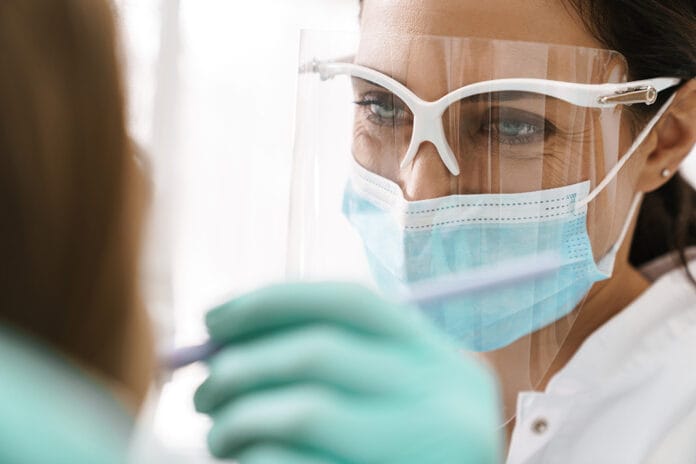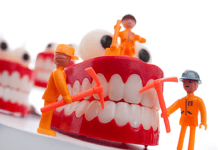As a 22-year seasoned clinician in the dental hygiene community, I have witnessed profound changes in dental practice and job opportunities and developed a strong rapport with dental patients and dental staff. My role as a dental hygienist has given me both dental knowledge and a personal understanding of patients’ needs.
Timeline
2000 ─ My career started at a general dental practice in upstate New York, working full-time for 36 hours per week. The practice was completely paper charts, an appointment book for scheduling, no computers, and minimal staff, which included two dental hygienists, one doctor, and an assistant who also ran the front desk. We were given 50-minute recare appointments and one-hour new patient appointments. The doctor treated very conservatively because he was nearing retirement and periodontal disease was not a primary focus. Radiographic x-rays were dipped for processing, and there was no panoramic or cone-beam available.
2002 ─ I transitioned to a pediatric practice full-time, again for 36 hours per week. Although we dental charted and treatment planned using paper charts, we had digital x-rays that consisted of films (phosphor plates) that were placed on a cylinder and then transferred to a computer. We also implemented the computers for scheduling, bookkeeping, and patient treatment assessment. In addition, I worked part-time nights at a dental practice with my mother, who also was a dental hygienist, under general supervision. The part-time office also used paper charts for charting and computers for scheduling and bookkeeping.
2007 ─ I moved to Virginia and obtained my license as a dental hygienist in New York. Again, a full-time was difficult to secure. So, I worked part-time at two general dental practices. The use of computers in these offices was utilized for all aspects of dentistry.
2009 ─ I obtained a schedule of four days a week with one of my part-time offices and then temped at over eight different offices until 2018 when I accepted a full-time position at another general dental practice.
2021 ─ I began working for a large practice that has multiple offices and specialty dentistry but is owned by one dentist with associate dentists. After 22 years, I now have full benefits and a 36-hour workweek over four and one-half days.
Technological Challenges
Software programs ─ One hardship faced by dental hygienists who accept a position at another practice or “temp” on a regular basis is learning the dental software. Computers were first introduced in dentistry during the 1960s. It wasn’t until around 2000, though, that dental offices were transitioning from paper charts to computers. In 2000, it was indicated that roughly 85% of all dentists in the United States were using computers to some capacity.1
When I attended dental hygiene school, I charted using paper charts and only used the computer for scheduling. I also graduated from high school at a time when computer classes were nonexistent, and word processors were just making their way into school classrooms.
I have used roughly nine different dental software programs during my career, and they have posed hardships because it was not uncommon to run across a dental software program with which I was completely unfamiliar. Although most software programs used in dental practices are similar, each office utilizes the software differently. For example, some offices will only use dental and periodontal charting and scheduling, and other offices implement all the amenities of a dental software program such as charting, scheduling, and auto notes, to name a few. Dental software training in-office can range from a quick tutorial on the software to a trial by error. The incorporation of dental software and the utilization of its components has increased over the years as digital imaging, and other technologies have been introduced.
Digital x-rays ─ The discovery of radiography in dentistry was in 1895 by Wilhelm Roetgen.2 My first experience with digital radiography wasn’t until 2002, and it consisted of a dental film that was exposed, then placed on a cylinder that spun and transferred the image to a computer. It wasn’t until 2007 that I was introduced to the digital x-rays most common in today’s dental practices.
Imagine taking an 18-film full-mouth series and having to dip them and wait until they run through a developer to expose the image. Not only was it time-consuming, but it left no room for error. The variables of a perfect exposed film consist of making sure your processing fluids were fresh, as well as implementing the proper exposure when taking the radiograph.
Another downfall of the archaic film developing method was once a radiograph was sent to the insurance company for verification of a dental procedure or needed by a specialist, that x-ray was no longer available to you in the dental practice. I should probably mention we were able to duplicate images, but the diagnostics of the radiograph were altered during this process.
The introduction of digital radiography has changed the game for the dental community because it lowers radiation dosages for the patient, is less time-consuming than processing radiographic films and is visually more enhanced for diagnostic review. The now-common use of the cone-beam CAT scan should also be mentioned since they were not available in any office where I worked until the mid-2000s.
Scope of Dental Hygiene Practice
Most notably, the greatest change I have experienced in dental hygiene is the dental hygienist’s role in the office setting. At the beginning of my career, I felt like my job was to only clean teeth; there was not an emphasis on periodontal disease and overall health. Although I received an extensive education about periodontal disease, it wasn’t until the mid-2000s that I was able to implement what I had learned to its full capacity.
I was offered a job in 2016 at a general dental practice to perform non-surgical periodontal therapy/SRP procedures for the office one day a week. This has helped me to practice my periodontal knowledge, which has been implemented increasingly in my daily practice.
Furthermore, in addition to more emphasis on periodontal disease in the dental hygiene practice, the introduction of anesthesia administered by the dental hygienist, cancer screening apparatuses, digital dental caries detection devices, and laser use were more commonly implemented in dental practices around the mid-2000s. In my experience, training on these additional dental devices as opposed to the dental software was available through lunch-and-learns and after-work seminars. In many ways, the introduction of these new techniques and screening devices ensures that a more accurate diagnostic and preventive appointment will be made. Unfortunately, as new technologies are introduced and implemented, the appointment times must be adjusted so these technologies can be implemented properly and are advantageous to the patient’s education.
Also, the new updated screenings and treatments are implemented on a case-by-case basis, as are sealant placement and impressions for nightguards, to just name a few of the dental hygienist’s duties that I have performed.
However, the administration of the anesthesia by the dental hygienist is a plus because there is no doctor wait time. Unfortunately, this is not available in all states, and the scope of administration varies by state. Therefore, this may pose additional schooling for dental hygienists moving from one state to another. Fortunately for me, I was certified in anesthesia prior to moving to Virginia, but the anesthesia restrictions were different in New York than in Virginia, so I was less confident in administering the inferior alveolar nerve block.
COVID-19
The COVID-19 pandemic has had a major effect on my career. First, with the six-week shutdown of all elective dental procedures, I experienced the most time off from work since 2001, when I broke my scaling hand and was off for eight weeks.
However, I understand that some practices were shut down for longer than six weeks. Aside from just recently accepting a position at an office that allows for vacation time, this was quite an adjustment.
Another change I have experienced is the increase in personal protective equipment to be worn all day for eight hours. (Sigh) This includes N95 masks with a Level-3 mask worn over the N95 (at the beginning of the pandemic due to PPE supply chain issues), head cap, face shield, and gown. As a woman who is in her fifties, I sometimes feel that I need a personal air conditioning unit strapped to my back!
In addition, the time away from the dental office during the COVID-19 shutdown didn’t just include the dental hygienist but the patients as well. In fact, only 80% of active dental patients have returned since the shutdown, as reported by the American Dental Association.3 Regardless of the 20% patient loss since the introduction to COVID-19, 35.9% of dental personnel did not return to their positions after the quarantine.3
Since returning to work after the shutdown, not only have my appointment times increased due to the COVID-19 protocols, but every day is a struggle playing the catch-up game with dental patients who have now started to come back for their hygiene appointments. Due to the personnel shortages and longer appointment times, the dental schedules are at capacity, with some offices scheduling three to six months out.
Also, this time-lapse since patients’ last appointments meant oral home care screenings are resulting in more cases of active periodontal disease and a higher presence of bacterial plaque, calculus, and gingivitis. In my 22 years, this is the hardest I have worked as a dental hygienist, bringing patients’ gingival health back to a pre-COVID dental status.
Overall, the advancements and changes in dentistry have enhanced my skills over the last 22 years and have been welcomed changes. Furthermore, the camaraderie with patients and staff is the highlight of being a dental hygienist. Although no dental office is “cookie-cutter” ─ they all implement treatment using different diagnostic tools, software, and office protocol ─ the end game is the same: To treat the patient with a standard of care within our practice scope, regardless of change.
Before you leave, check out the Today’s RDH self-study CE courses. All courses are peer-reviewed and non-sponsored to focus solely on high-quality education. Click here now.
Listen to the Today’s RDH Dental Hygiene Podcast Below:
References
- Dental Software. (n.d.) Wikipedia. Retrieved from https://en.wikipedia.org/wiki/Dental_software
- Jayachandran, S. Digital Imaging in Dentistry: A Review. Contemporary Clinical Dentistry. 2017; 8(2): 193-194. Retrieved from https://www.ncbi.nlm.nih.gov/pmc/articles/PMC5551320/
- Gurenlian, J.R., Morrissey, R., Estrich, C.G., Battrell, A., et al. Critical Issues Facing the Dental Hygiene Profession. Journal of Dental Hygiene. February 2021; 95(1). Retrieved from https://www.adha.org/pri_docs/Feb-2021_JDH_EmployPatterns_DH_COVID.pdf











